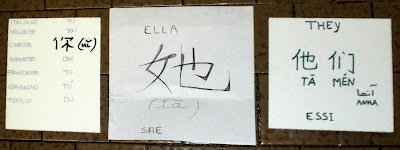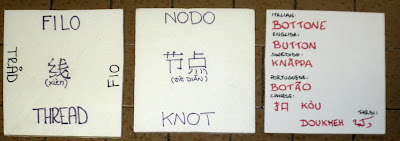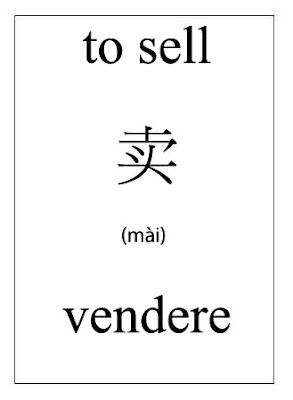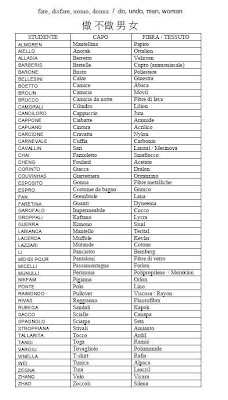Notes around the Lectures given by Vittorio Marchis at Politecnico di Torino
Wednesday, December 9, 2009
References
Some links in the web
Literature:
Liber & Liber.
Gutenberg Project
Planches de l'Encycclopédie
Encyclopédie, by Diderot and D'Alembert
Books & other:
Scribd
Comics:
Cover
Fairy Tales:
http://photoclub.controluce.it/scrigno/estratti-controluce/Dalla%20favola%20alla%20fiaba/Dalla%20favola%20alla%20fiaba.htm
http://www.carabinieri.it/arma/curiosita/fiabe/Fiabe_Main.htm
http://www.dienneti.it/percorsi/favole_fiabe.htm
http://www.lefiabe.com/
http://www.letturegiovani.it/Classiche.htm
http://www.wim.it/?path=/bambini/fiabe/fiabe_italiane
http://www.wim.it/?path=/bambini/fiabe/fiabe_italiane_brevi
http://xoomer.virgilio.it/hitfc/
http://www.aquino.it/pagine%20links/fiabe.htm
Thursday, December 3, 2009
Next Lecture
The next Lecture of "History of Material Culture" will be held in Alenia Space on Wednesday, the 9th December, from 9.00 AM to 2.00 PM.
The student are kindly requested to bring with the elaborated final work for a preliminary examination.
In the following the structure of the "inquiry".
1. Identify the assigned "domestic tool"
2. Prepare a Conceptual Map (CM) for the organization of the final report.
3. Collect data and elements for the inquiry, and organize them in the following categories:
3.1 Dictionary, i.e. translation of the "word" into different languages
3.2 Glossary, i.e. a word cluster around the "domestic tool" (in English)
3.3 Anthology, i.e. a collection of literary texts, from mythology thru the Web (do not forget the bibliographic references)
3.4 Comics, at least 1 picture containing an explicit citation of the "domestic tool"
3.5 Images from the visual arts (at least 3 picture)
3.6 Movies (at least 1 clip)
3.7 Songs (at least 1 lyrics)
3.8 Materials (a chronological selection of the materials typical of the "domestic tool")
3.9 Shapes (an evolution of the "domestic tool")
3.10 Innovations (a selection of 3-5 Patents (*))
4. Prepare a conclusive report that - in a narrative form - describes the topics examined within the inquiry (2000-6000 characters maximum).
Pdf files are kindly requested for an easier examination of the work done.
(*) Visit the "freepatentsonline" site (a free registration is required).
The student are kindly requested to bring with the elaborated final work for a preliminary examination.
In the following the structure of the "inquiry".
1. Identify the assigned "domestic tool"
2. Prepare a Conceptual Map (CM) for the organization of the final report.
3. Collect data and elements for the inquiry, and organize them in the following categories:
3.1 Dictionary, i.e. translation of the "word" into different languages
3.2 Glossary, i.e. a word cluster around the "domestic tool" (in English)
3.3 Anthology, i.e. a collection of literary texts, from mythology thru the Web (do not forget the bibliographic references)
3.4 Comics, at least 1 picture containing an explicit citation of the "domestic tool"
3.5 Images from the visual arts (at least 3 picture)
3.6 Movies (at least 1 clip)
3.7 Songs (at least 1 lyrics)
3.8 Materials (a chronological selection of the materials typical of the "domestic tool")
3.9 Shapes (an evolution of the "domestic tool")
3.10 Innovations (a selection of 3-5 Patents (*))
4. Prepare a conclusive report that - in a narrative form - describes the topics examined within the inquiry (2000-6000 characters maximum).
Pdf files are kindly requested for an easier examination of the work done.
(*) Visit the "freepatentsonline" site (a free registration is required).
Thursday, November 26, 2009
Monday, November 23, 2009
Visit to the Museum

Le lecture of Tuesday 24th november will take place at Palazzo Madama - Museo Civico di Arte Antica.
The meeting point is in front of the entrance at 2.45 PM.
Monday, November 16, 2009
More concepts
Sunday, November 8, 2009
More Movies
Movies are the today narrative form for telling stories: they can be also a good workbench for an anthropological inquiry around a "domestic tool"...

Delicatessen (1990), directed by Marc Caro.

The General (1927), directed by Buster Keaton

The Corporation (2003), directed by Mark Achbar and Jennifer Abbott

Robots (2005), directed by Chris Wedge and Carlos Saldanha.

Apollo 13 (1995), directed by Ron Howard.

Delicatessen (1990), directed by Marc Caro.

The General (1927), directed by Buster Keaton

The Corporation (2003), directed by Mark Achbar and Jennifer Abbott

Robots (2005), directed by Chris Wedge and Carlos Saldanha.

Apollo 13 (1995), directed by Ron Howard.
Wednesday, November 4, 2009
Concepts
In order to draw a conceptual map around the "domestic tool" object of the research, please choose from the above list, 5-7 concepts that can be developed to describe the "tool":
accuracy
biocompatibility
brilliance
cleanliness
costs
curiosity
durability
eco-compatibility
economy
elasticity
ergonomics
fetishism
finishing
flammability
flexibility
functionality
handicraft
handling
interchangeability
irony
lightness / heaviness
luxury
maintainability
measure
modularity
mysticism
mythology
pleasure
practicality
redundancy
resistance
safety
servicing
shape
sharpness
standard
strength
superstition
toxicity
traceability
transparency
transportability
triviality
uniformity
utility
value
variety
violence
workmanship
accuracy
biocompatibility
brilliance
cleanliness
costs
curiosity
durability
eco-compatibility
economy
elasticity
ergonomics
fetishism
finishing
flammability
flexibility
functionality
handicraft
handling
interchangeability
irony
lightness / heaviness
luxury
maintainability
measure
modularity
mysticism
mythology
pleasure
practicality
redundancy
resistance
safety
servicing
shape
sharpness
standard
strength
superstition
toxicity
traceability
transparency
transportability
triviality
uniformity
utility
value
variety
violence
workmanship
Tuesday, October 20, 2009
Ulysses by James Joyce
尤利西斯

This novel can be used as a literary test-rig for investigating the narrative context of the "domestic tools" subject to the inquiry.
Look at this site.
Some Movies, around the Material Culture
Thursday, October 8, 2009
Students & Things
Starting point
Friday, October 2, 2009
Lectures - academic year 2009-2010
The theme of this year's course is:
DOMESTIC TOOLS

Note for the students: Please start thinking a "domestic tool" you would like to investigate via a multicultural, multidimensional inquiry.
Reference: Vittorio MARCHIS, Storie di cose semplici, Milano : Springer, 2008.
DOMESTIC TOOLS

Note for the students: Please start thinking a "domestic tool" you would like to investigate via a multicultural, multidimensional inquiry.
Reference: Vittorio MARCHIS, Storie di cose semplici, Milano : Springer, 2008.
Saturday, June 13, 2009
Clothing Item Inquiry - Work Results and Scores
Here the notes for the final work prepared for the History of Material Culture course:
THIRD GROUP:
Pietro ALLASIA - 29
Jiajun FAN - 30
Wei CHAO - 30
Zhi CHAI - 30 L
Shuwen CHENG - 30 L
Lulu Zhao - 30 L
SECOND GROUP:
Luciano AIELLO – 30 L
Enrico BARBERIS – 30
Giuseppe BARONE - 28
Diego BELLESINI – 29
Lorena Federica BOETTO – 28
Stefania BRUCCO – 30
Carlo CAMORALI – 30 L
Marco CANDILORO – 30
Arianna CAPPONE – 29
Silvia CAPUANO – 30 L
Federica CORINTO – 30
Annachiara GUERRA – 28
Tainà LACERDA – 30
Layla MEHDI POUR – 28
Marco MICELLI - 29
Sara MUNULLI – 30
Domenica RAIMONDO – 30
Giorgio RUBEGA - 30
Erika SACCO – 30
Luisa STROPPIANA – 27
Stefano VARGIU – 29
FIRST GROUP:
Lisen ALMGREN - 29
Nils BROLIN - 30
Francesco CARCIONE - 30
Francesca CARNEVALE - 30
Massimiliano CAVALLIN - 30 L
Ana Filipa COUVINHAS - 30 L
Gianluca ESPOSITO - 29
Antonella ESPRO - 30
Simone FARETINA - 30
Francesca GAROFALO - 30
Giulia GROPPALI - 30
MArienza LABIANCA - 30 L
NiaoNiao LI - 29
Faezeh NIKFAM - 30
Emanuela Livia PONTE - 30
Francesco SPAGNOLO - 30 L
Diego TALLARITA - 29
Matteo TANGI - 30
Yang ZHANG - 30 L
THIRD GROUP:
Pietro ALLASIA - 29
Jiajun FAN - 30
Wei CHAO - 30
Zhi CHAI - 30 L
Shuwen CHENG - 30 L
Lulu Zhao - 30 L
SECOND GROUP:
Luciano AIELLO – 30 L
Enrico BARBERIS – 30
Giuseppe BARONE - 28
Diego BELLESINI – 29
Lorena Federica BOETTO – 28
Stefania BRUCCO – 30
Carlo CAMORALI – 30 L
Marco CANDILORO – 30
Arianna CAPPONE – 29
Silvia CAPUANO – 30 L
Federica CORINTO – 30
Annachiara GUERRA – 28
Tainà LACERDA – 30
Layla MEHDI POUR – 28
Marco MICELLI - 29
Sara MUNULLI – 30
Domenica RAIMONDO – 30
Giorgio RUBEGA - 30
Erika SACCO – 30
Luisa STROPPIANA – 27
Stefano VARGIU – 29
FIRST GROUP:
Lisen ALMGREN - 29
Nils BROLIN - 30
Francesco CARCIONE - 30
Francesca CARNEVALE - 30
Massimiliano CAVALLIN - 30 L
Ana Filipa COUVINHAS - 30 L
Gianluca ESPOSITO - 29
Antonella ESPRO - 30
Simone FARETINA - 30
Francesca GAROFALO - 30
Giulia GROPPALI - 30
MArienza LABIANCA - 30 L
NiaoNiao LI - 29
Faezeh NIKFAM - 30
Emanuela Livia PONTE - 30
Francesco SPAGNOLO - 30 L
Diego TALLARITA - 29
Matteo TANGI - 30
Yang ZHANG - 30 L
Wednesday, May 20, 2009
ESAMI & APPELLI
Orario completo degli appelli di esame di scienze umane:
9.giu 11.00-13.30 Aula 4 / SIND-4 (Marchis)
12 giu 13.30-16.00 Aula 9i/ SING (Marchis)
16 giu 13.30-16.00 Aula 1 / STEC (Marchis)
16 giu 13.30-16.00 Aula 1 / SIND-1 (Marchis)
16 giu 13.30-16.00 Aula 3 / STEC (Nieddu)
16 giu 13.30-16.00 Aula 5 / SCON (Trivero)
22 giu 9.00-11.00 CEMED / SCMA (Marchis)
22.giu 11.00-13.30 Aula 4 / SIND-4 (Marchis)
23 giu 16.30-19.00 Aula 4 / SING (Marchis)
1 lug 9.00-11.00 CEMED / SCMA (Marchis)
7 lug 9.00-11.00 Aula 1 / SCMA (Marchis)
7 lug 8.30-11.00 Aula 1 / STEC (Marchis)
7 lug 8.30-11.00 Aula 1 / SIND-1 (Marchis)
7 lug 8.30-11.00 Aula 3 / STEC (Nieddu)
7 lug 8.30-11.00 Aula 5s/ SCON (Trivero)
1 sett 9.00-11.00 CEMED / SCMA (Marchis)
7 sett 9.00-11.00 CEMED / SCMA (Marchis)
CEMED = centro Museo e Documentazione Storica, Via Cavalli 22/H
SIND = Storia dell'industria in Italia (1 e 4 Facoltà Ingegneria)
SING = Storia dell'ingegneria (4 Facoltà Ingegneria)
STEC = Storia della tecnologia (1 Facoltà Ingegneria)
SCON = Storia contemporanea (1 Facoltà Ingegneria)
SCMA = Storia della cultura materiale (1 Facoltà Architettura)
9.giu 11.00-13.30 Aula 4 / SIND-4 (Marchis)
12 giu 13.30-16.00 Aula 9i/ SING (Marchis)
16 giu 13.30-16.00 Aula 1 / STEC (Marchis)
16 giu 13.30-16.00 Aula 1 / SIND-1 (Marchis)
16 giu 13.30-16.00 Aula 3 / STEC (Nieddu)
16 giu 13.30-16.00 Aula 5 / SCON (Trivero)
22 giu 9.00-11.00 CEMED / SCMA (Marchis)
22.giu 11.00-13.30 Aula 4 / SIND-4 (Marchis)
23 giu 16.30-19.00 Aula 4 / SING (Marchis)
1 lug 9.00-11.00 CEMED / SCMA (Marchis)
7 lug 9.00-11.00 Aula 1 / SCMA (Marchis)
7 lug 8.30-11.00 Aula 1 / STEC (Marchis)
7 lug 8.30-11.00 Aula 1 / SIND-1 (Marchis)
7 lug 8.30-11.00 Aula 3 / STEC (Nieddu)
7 lug 8.30-11.00 Aula 5s/ SCON (Trivero)
1 sett 9.00-11.00 CEMED / SCMA (Marchis)
7 sett 9.00-11.00 CEMED / SCMA (Marchis)
CEMED = centro Museo e Documentazione Storica, Via Cavalli 22/H
SIND = Storia dell'industria in Italia (1 e 4 Facoltà Ingegneria)
SING = Storia dell'ingegneria (4 Facoltà Ingegneria)
STEC = Storia della tecnologia (1 Facoltà Ingegneria)
SCON = Storia contemporanea (1 Facoltà Ingegneria)
SCMA = Storia della cultura materiale (1 Facoltà Architettura)
Thursday, April 9, 2009
Egypt
An Account of The Manners and Customs of The Modern Egyptians. Written In Egypt During the Years 1833—1835. (electronic edition)
Technology & Totemism

Technology and Magic have been always strictly connected. Both look at the future, and develop their challenges upon a well organized system of knowledge. The role of Science is slightly different...
Some useful references:
I media elettronici e il nuovo totemismo tecnologico
Totem mana tabù, di Carmela Pignato
Tuesday, April 7, 2009
Inquiry Report

Guidelines for the compilation of the Inquiry Report on the "Clothing Item" (CI)
1. Identify the CI
2. Prepare a Conceptual Map (CM) consisting of no more than 7 nodes
Remind that in the CM the connections are of prime importance
3. Start collecting data and elements for the inquiry, i.e.
3.1 Dictionary, i.e. translation in different languages of the CI
3.2 Glossary, i.e. a word cluster around the CI (in English)
3.3 Anthology, i.e. a collection of literary texts, from mythology thru the Web (do not forget the bibliographic references)
3.4 Comics, at least 1 picture containing an explicit citation of the CI
3.5 Images from the visual arts (at least 3 picture)
3.6 Movies (at least 1 clip)
3.7 Songs (at least 1 lyrics)
3.8 Materials (a chronological selection of the CI materials)
3.9 Shapes (an evolution of the CI)
3.10 Innovations (a selection of 3-5 Patents (*))
4. Prepare a conclusive text that in a narrative form goes along the paths traced by the CM (2000-4000 characters maximum; no lists, schematics, graphs are allowed)
NEXT LECTURE WILL BE ON APRIL, 28th
(*) Patents can be found in the Web Site http://www.freepatentsonline.com
History of textiles and clothing

Many references are present on the WEB. Here a first overview:
WIKIPEDIA: History of clothing and textiles
Textilesonline
BTTG: The History of Textiles
The Textile System
Questia
Tuesday, March 24, 2009
Sunday, March 22, 2009
Items to inquire
fare, disfare, uomo, donna
do, undo, man, woman
做 不做 男 女
Italian English
Anorak Anorak
Berretto Cap
Bretelle Braces
Busto Corset
Calze Socks
Camice Overall
Camicia Shirt
Camicia da notte Nightdress
Cappuccio Hood
Ciabatte Slippers
Cilindro Cylinder hat
Cintura Belt
Costume da bagno Swimsuit
Cravatta Tie
Cuffia Coif
Sari Sari
Fazzoletto Handkerchief
Foulard Foulard
Giacca Jacket
Giarrettiera Garter
Gonna Skirt
Grembiule Apron
Guanti Gloves
Impermeabile Raincoat
Kaftano Kaftan
Kimono Kimono
Mantellina Cape
Mantello Mantel
Muffole Mitts
Mutande Underpants
Panciotto Waistcoat
Pantaloni Throusers
Passamontagna Balaclavas
Perizoma
Pigiama Pajamas
Polo Polo-shirt
Pullover Woolly
Reggiseno Bra
Sandali Sandals
Scialle Shawl
Sciarpa Scarf
Stivali Boots
Tocco Toque
Toga Toga
Tovagliolo Napkin
T-shirt T-shirt
Tunica Tunic
Tuta Dungarees
Velo Veil
Zoccoli Hooves
Conceptual map
Conceptual Maps are simple and practical knowledge representation tools that allow you to convey complex conceptual messages in a clear, understandable way. They facilitate both teaching and learning. Moreover they are represented naturally as graphs.
From a paper by Juan C. Dürsteler
Graph Nodes represent the concepts (or the main ideas), Graph Links represent the relationship between the concepts and any consideration can be developed around this ones.

An example:

From a paper by Juan C. Dürsteler
Graph Nodes represent the concepts (or the main ideas), Graph Links represent the relationship between the concepts and any consideration can be developed around this ones.

An example:

Wednesday, March 4, 2009
Sunday, March 1, 2009
The artifact, the tool, the machine

Albrecht Duerer, Melencolia (1514)
The artifact (artefatto (IT); artefact (FR); artfacto (SP); Artefakt (DE); 品, 伪 (Chinese))is the produce of an intentional activity that modifies the natural reality.
The tool (utensìle (IT); outil (FR); Werkzeug (DE); utensilio (SP); 工具 (Chinese)) is an artifact that extends the human capabilities, a prosthesis of the body.
The machine, or better the engine (macchina (IT); machine (FR); maquina (SP); Maschine (DE); 机 (Chinese)) is a device that by using a resource transforms the structure of a system.
HOMEWORK: find in the Duerer engraving Melencoloia the artifacts, the tools, and the machines.
Here the first reply by Vito Domenico Vinella.

Saturday, February 28, 2009
Mythology

Within textile material culture the myth of Penelope can be assumed as a pivot for any future consideration. In the following some suggestions from the Iliad and from the Odyssey written by Homer.
Text & Textile, in Ancient World
The Fabric of Myth
Tuesday, February 24, 2009
Do Undo Man Woman - 做 不做 男 女

This is the title of the course, and, in the following, the words chosen for starting an elementary multilingual dictionary are reported in the sequence (Student, English term, Italian term):
ALMGREN TESSUTO TISSUE
BARBERIS CUCIRE TO SEW
BARONE TAGLIARE TO CUT
BELLESINI ARIA AIR
BROLIN RETE NET
BRUCCO FILO THREAD
CAMORALI CUOIO LEATHER
CANDILORO PIETRA STONE
CAPPONE OSSO BONE
CARCIONE ACQUA WATER
CARNEVALE TORCERE TO TWIST
CAVALLIN CONTARE TO COUNT
CHAI COPPIA COUPLE, PAIR
CHENG SINGOLO SINGLE
CORINTO FONDERE TO MOULD
COUVINHAS FERRO IRON
ESPOSITO MAGLIA KNITTING
ESPRO PIEGARE TO BEND
FAN TANTI MULTIPLE, MANY
FARETINA TERRA EARTH
GAROFALO COMPERARE TO BUY
LAZZARI INTRECCIARE TO WEAVE
LI ESSERE TO BE
MICELLI STRAPPARE TO TEAR
MUNULLI FUOCO FIRE
NIKFAM BOTTONE BUTTON
PONTE LAVARE TO WASH
RAIMONDO RICORDARE TO REMEMBER
RUBEGA FORMARE TO FORM
SACCO NODO KNOT
SPAGNOLO TINGERE TO PAINT
STROPPIANA SCRIVERE TO WRITE
TANGI LEGNO WOOD
VARGIU VETRO GLASS
VINELLA VENDERE TO SELL
WEI AVERE TO HAVE
ZHANG FARE TO DO
ZHAO DISEGNARE TO DRAW
The students are invited to produce some cardboard panels like the following:

Monday, February 23, 2009
A Game

Words are the elements of any history, languages and dialects are their local declinations. Following the model of the Rimmemo (R) game, the students will be suggested to prepare some tokens where ideograms, pictures and words contribute to an essential Basic Language for the History of Material Culture.
The rime will help to memorize...
The "Crafts ABC"...
Saturday, February 21, 2009
Do, undo, man, woman
These are the themes of the Lectures of History of Material Culture, that pivot around the clothing techniques, from the artisanal crafts till the contemporary industry.
Chapters deal with fibers, fabric, clothes...

Lectures Index:
02.24. Introduzione al Corso. I temi della storia della cultura materiale. L’istruttoria sull’abbigliamento. / Introduction to the Lectures. History of Material Culture Themes. Inquiry on Clothing
03.03. Poiein: fare. Techné vs. Ars. La materia / le cose. (La ragazza del secolo, di George Cukor) / Poiein: to make. Techné vs. Ars. Matter and Things. (It Should Happen to You., by George Cukor)
03.10. Intrecci, nodi, trame, orditi, maglie, … (L’albero degli zoccoli, di Ermanno Olmi) / Braids, Knots, Wefts, Warps, Textures… (L’albero degli zoccoli, by Ermanno Olmi)
03.10. Le origini della tecvnologia - Le mappe concettuali (2001 Odissea nello spazio, di Stanley Kubrick) / The origin of technology … The conceptual mapping (2001 Space Odyssey, by Stanley Kubrick)
03.24. Il crudo e il cotto: l’antropologia e la cultura materiale. (Mangiare, bere, uomo, donna, di Ang Lee) / The Raw and the Cooked: Anthropology and Material Culture (飲食男女, by Ang Lee)
03.31. I cinque sensi: toccare, odorare, gustare, sentire, vedere (I cinque sensi, di di Jeremy Podeswa) / The 5 Senses: to touch, to smell, to taste, to hear, to see (Five Senses, by Jeremy Podeswa)
04.07. Homo sapiens / homo sacer / homo ludens / homo faber. (Furore, di John Ford) / Homo sapiens / homo sacer / homo ludens / homo faber. (The Grapes of Wrath, by John Ford)
04.21. Deus ex machina: dal mito di Prometeo alle utopie di Metropolis. (Metropolis di Fritz Lang) / Deus ex machina: from Prometheus Myth to Metropolis Utopies. (Metropolis by Fritz Lang)
04.28. Oikia / domus: dalla “casa di Adamo in paradiso” alla “machine à habiter”. (Sleeper di Woody Allen) Oikia / domus: from Adam’s House” to the “machine à habiter”. (Sleeper di Woody Allen)
05.05. La scienza e il bricolage, intorno a Claude Levi-Strauss (Ritorno al futuro di Robert Zemeckis) / Science vs. Bricolage, around Claude Levi-Strauss (Back to the Future di Robert Zemeckis)
05.12. I segni , le parole, le cose. La memoria materiale: dalle Muse al museo (Arca Russa di A.Sokurov) / Signs, Words, Things. Material Memories: from Muses to Museum (Russian Ark, by A. Sokurov)
05.19. Dalla bottega all’industria: saper fare / saper far fare. (La classe operaia va in paradiso, di Elio Petri) / From the Workshop to the Factory: to know how to do (La classe operaia va in paradiso, di E.Petri)
05.26. Technologia ridens. (Dove vai sono guai, di Jerry Lewis) / Technologia ridens. (Who's Minding the Store?, by Jerry Lewis)
06.09. Discussione delle istruttorie e conclusione del corso / Final critical review of student inquiries and conclusions.
Chapters deal with fibers, fabric, clothes...

Lectures Index:
02.24. Introduzione al Corso. I temi della storia della cultura materiale. L’istruttoria sull’abbigliamento. / Introduction to the Lectures. History of Material Culture Themes. Inquiry on Clothing
03.03. Poiein: fare. Techné vs. Ars. La materia / le cose. (La ragazza del secolo, di George Cukor) / Poiein: to make. Techné vs. Ars. Matter and Things. (It Should Happen to You., by George Cukor)
03.10. Intrecci, nodi, trame, orditi, maglie, … (L’albero degli zoccoli, di Ermanno Olmi) / Braids, Knots, Wefts, Warps, Textures… (L’albero degli zoccoli, by Ermanno Olmi)
03.10. Le origini della tecvnologia - Le mappe concettuali (2001 Odissea nello spazio, di Stanley Kubrick) / The origin of technology … The conceptual mapping (2001 Space Odyssey, by Stanley Kubrick)
03.24. Il crudo e il cotto: l’antropologia e la cultura materiale. (Mangiare, bere, uomo, donna, di Ang Lee) / The Raw and the Cooked: Anthropology and Material Culture (飲食男女, by Ang Lee)
03.31. I cinque sensi: toccare, odorare, gustare, sentire, vedere (I cinque sensi, di di Jeremy Podeswa) / The 5 Senses: to touch, to smell, to taste, to hear, to see (Five Senses, by Jeremy Podeswa)
04.07. Homo sapiens / homo sacer / homo ludens / homo faber. (Furore, di John Ford) / Homo sapiens / homo sacer / homo ludens / homo faber. (The Grapes of Wrath, by John Ford)
04.21. Deus ex machina: dal mito di Prometeo alle utopie di Metropolis. (Metropolis di Fritz Lang) / Deus ex machina: from Prometheus Myth to Metropolis Utopies. (Metropolis by Fritz Lang)
04.28. Oikia / domus: dalla “casa di Adamo in paradiso” alla “machine à habiter”. (Sleeper di Woody Allen) Oikia / domus: from Adam’s House” to the “machine à habiter”. (Sleeper di Woody Allen)
05.05. La scienza e il bricolage, intorno a Claude Levi-Strauss (Ritorno al futuro di Robert Zemeckis) / Science vs. Bricolage, around Claude Levi-Strauss (Back to the Future di Robert Zemeckis)
05.12. I segni , le parole, le cose. La memoria materiale: dalle Muse al museo (Arca Russa di A.Sokurov) / Signs, Words, Things. Material Memories: from Muses to Museum (Russian Ark, by A. Sokurov)
05.19. Dalla bottega all’industria: saper fare / saper far fare. (La classe operaia va in paradiso, di Elio Petri) / From the Workshop to the Factory: to know how to do (La classe operaia va in paradiso, di E.Petri)
05.26. Technologia ridens. (Dove vai sono guai, di Jerry Lewis) / Technologia ridens. (Who's Minding the Store?, by Jerry Lewis)
06.09. Discussione delle istruttorie e conclusione del corso / Final critical review of student inquiries and conclusions.
Subscribe to:
Comments (Atom)



.jpg)
.jpg)



.jpg)
.jpg)
.jpg)
















